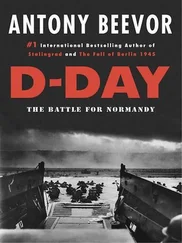Nor had Picton’s 5th Division succumbed to the same hubristic temptation as the cavalry. After their bayonet charge they obeyed orders to return to their line on the crest of the slope on the Anglo-Allied centre-left, thereby closing any gaps that Napoleon might have exploited if they had — maddened by blood-lust — followed d’Erlon’s corps to the bottom of the slope and beyond. Three companies of the 95th returned to the Sandpit. Even the success of Durutte was reversed when Prince Bernhard’s troops retook the farm of Papelotte.
At this point in the battle, soon after 3 p.m., there seems to have been a relative lull in the hostilities — except at the hard-pressed farmhouses — while both armies drew breath. Wellington used this short respite to bring General Sir John Lambert’s 10th Brigade into the line where the von Bijlandt brigade had been, as Kempt took over from Picton as commander of the 5th Division.
Wellington certainly needed every moment; he had expected the Prussians to begin arriving at noon, but it was not really until after 4 p.m. that they could be deployed in large enough numbers to aid him significantly. Thankfully though, by that time the sound of Blücher’s cannon could be clearly heard in the east.
Meanwhile Napoleon finally received a reply from Grouchy, which had been sent from Walhain on the Gembloux—Wavre road at 11 a.m. This stated that he was heading for Wavre, but was still some way off. The story goes that he was eating strawberries with some of his senior commanders at a farm on the road when the roar of the Grand Battery’s guns was heard a few miles to the west. His subordinates, especially General Gérard, implored him to give up the Prussian chase and march immediately towards the sound of the guns, which could only mean that Napoleon was engaging the Anglo-Allied army.
Fearing the consequences of directly contravening the Emperor’s verbal and written orders, Grouchy overruled them and insisted upon continuing the march on to Wavre. An officer with more initiative or imagination — Kellermann, say, or Pajol — would almost certainly have behaved differently, but Napoleon had given Grouchy his marshal’s baton in the knowledge that he was not of that particular stamp. Grouchy’s message made it clear to Napoleon that he would not be appearing on the battlefield that day, just as the charge of the Heavy and Union Brigades had dispersed any lingering suspicions he might have had that Wellington was merely fighting a rearguard action while he withdrew his main force through the Forest of Soignes.
With the Prussians starting to arrive in force from about 4.30 p.m. onwards, this was the time when the French could have — indeed should have — ended their attacks and gone onto the defensive. By withdrawing to a safe distance to await Grouchy’s arrival the next day, Napoleon might have salvaged his throne, at least for a little while longer. Yet he was a gambler; his career had seen him escape from tough spots time and again, often merely by upping the stakes.
Napoleon had been imprisoned during the Revolution, outnumbered in Italy, stranded in Egypt, assaulted during the Brumaire coup, plotted against by Talleyrand and Fouché, opposed by no fewer than seven European coalitions, humiliated in Russia, forced to abdicate, and exiled to Elba. Yet he had come back from every reverse.
D’Erlon’s corps was now beginning to regroup, and infantrymen were replacing the killed and wounded gunners of the Grand Battery. Quiot’s troops were trying to force their way into La Haye Sainte. It was hardly surprising, therefore, that at 4 p.m. on Sunday, 18 June 1815, when forced to decide between retreating and trying once again to break Wellington’s line before the Prussians could alter the course of the battle, Napoleon Bonaparte ordered Marshal Ney to do whatever it took to capture the walled farm that lay at the heart of the battlefield.
3
The Third Phase
THE THIRD PHASE of the battle started at 3.30 p.m., as soon as d’Erlon’s bedraggled corps had stopped running and were formed back into something approaching order. Ney personally took charge of the regiments that seemed the least demoralised by their experience at the hands of the British cavalry, and led them up towards La Haye Sainte in a bid to capture the farmhouse whose possession had become as much of a talisman and a strategic necessity as was that of Hougoumont. Yet despite his best efforts, ‘the bravest of the brave’ initially failed to take the key point in Wellington’s centre.
Meanwhile the Grand Battery and the rest of the French artillery continued pounding the Anglo-Allied lines, if anything harder than before, and despite Wellington’s orders to his infantry to lie down, the cannonading caused heavy losses in the ranks. Next came a massive cavalry attack on the Anglo-Allied centre; like d’Erlon’s infantry assault it was statistically one of the largest battle movements of the Napoleonic Wars.
There are a number of explanations for why the main French cavalry charge at Waterloo commenced when it did, largely unsupported by infantry as it should have been. Some historians argue that Ney mistook through his telescope the sight of some stragglers from the enemy lines who were moving back from the cannonading, as well as groups of soldiers carrying wounded comrades back to the field-hospitals, for a general withdrawal that he believed he could punish. 1Others think that his poor performance at Quatre Bras and on the following day rankled with him to the extent that he was desperate to be seen to deliver the battle-winning stroke. Still others believe that Wellington’s order to some regiments to withdraw a few paces was misinterpreted by the French.
There is certainly no written evidence to suggest that Napoleon commanded Ney to order the heavy cavalry to attack, and the Emperor later explicitly denied having done so. Ney himself was executed by firing squad that December, and his motivation was never established either. Yet in 2003 a book by the distinguished Napoleonic Wars historian Digby Smith, entitled Charge!: Great Cavalry Charges of the Napoleonic Wars, presented a fascinating new theory and fresh evidence about how and why the charge took place when it did, one that rings true considering the febrile mood of a cavalry regiment awaiting the order to charge. It also explains why the cuirassiers commenced their massive endeavour without the crucial infantry support that would have been so helpful.
In this explanation, based on a cock-up rather than the French historians’ favoured conspiracy theories, a key figure is Captain Fortune Brack of the 2nd Guard Lancers, a relatively junior figure in a light cavalry regiment that had taken part in the destruction of Ponsonby’s Union Brigade. Twenty years after the battle, Captain Brack wrote a letter to a friend (see APPENRDIX II) in which he admitted personal responsibility for the disaster of Ney’s premature charge. It seems that Brack, over-excited by the success against the Union Brigade, had mistaken movement on the Anglo-Allied lines for a retreat, and loudly called for an attack.
Officers around him then pushed forward to see for themselves, whereupon, as he put it: ‘The right hand file of our regimental line followed them.’ This movement was automatically copied along the regiment, merely in order ‘to restore the alignment’, but once the adjacent regiment — the Chasseurs-à-Cheval of the Guard — had also copied it, even though it was ‘of only a few paces at the right’, further down the line of horses it ‘became more marked’, so that by the time that it reached the dragoons and the Grenadiers-à-Cheval — who were impatiently awaiting the command to charge from Ney — they believed that the order had actually been given. As Brack explained: ‘They set off — and we followed!’ 2
Читать дальше
Конец ознакомительного отрывка
Купить книгу











